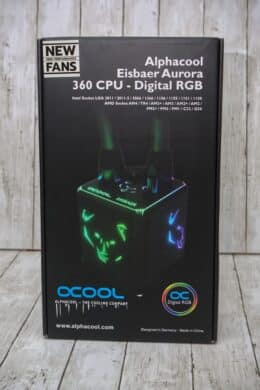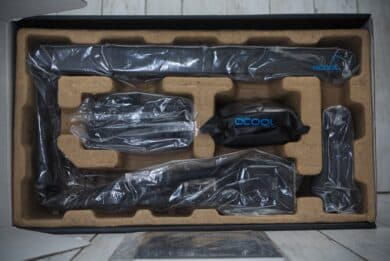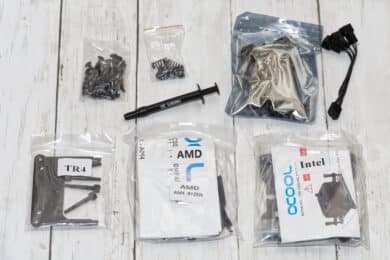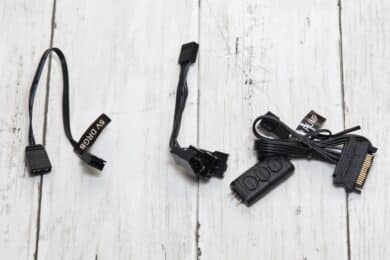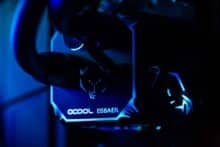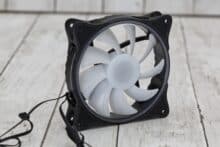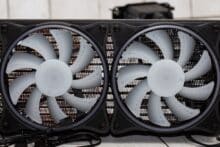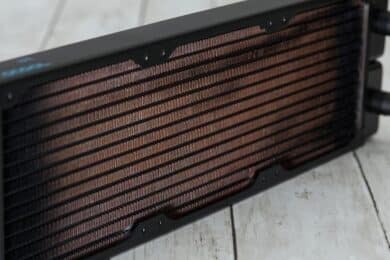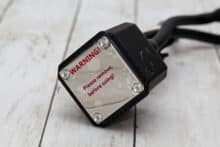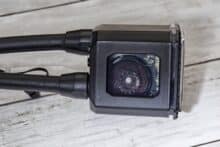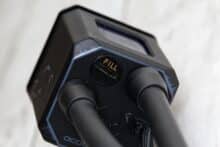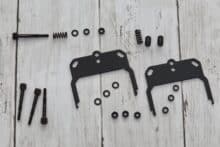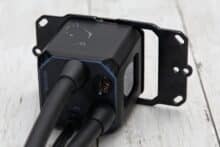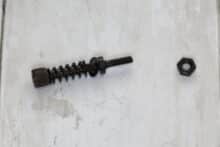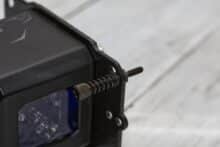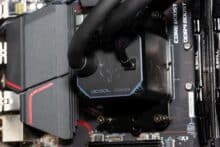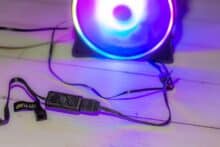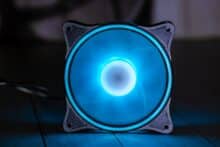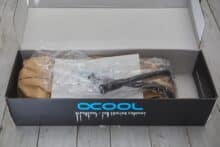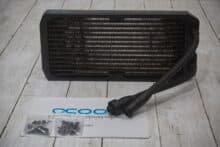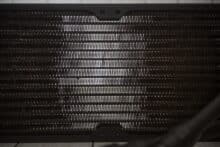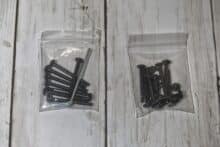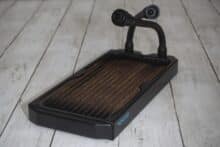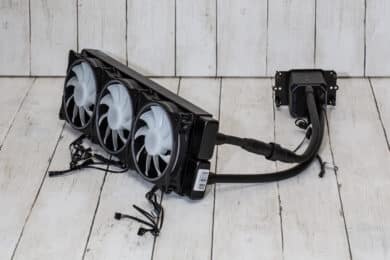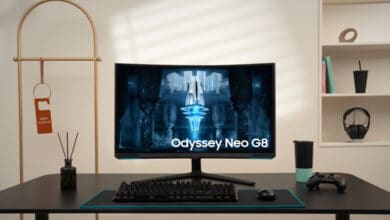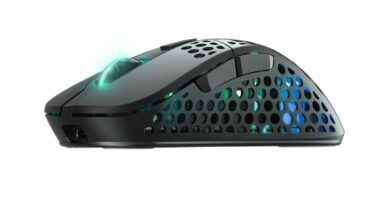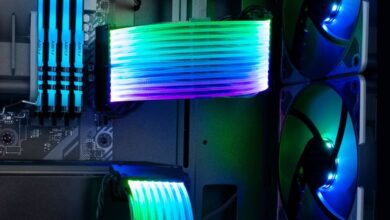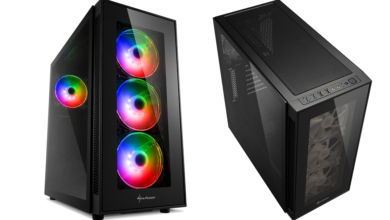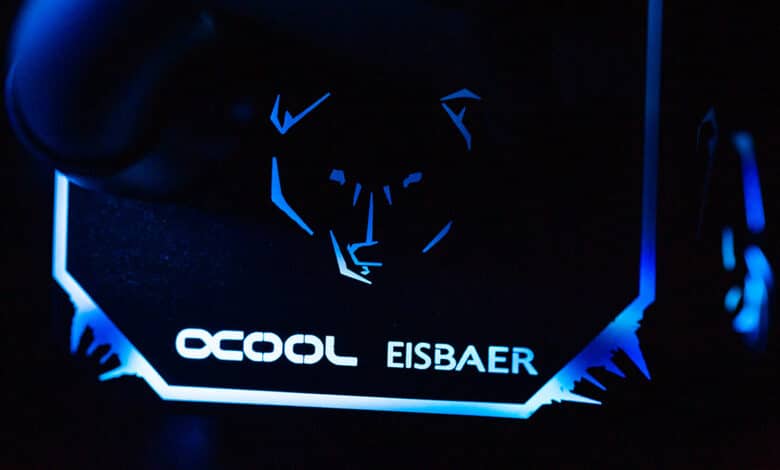
Alphacool, along with a few other brands such as EK Waterblocks, is one of the original names in the field of water cooling. Thus, Alphacool radiators made of copper have been found in many custom watercoolers for a long time. With the Eisbaer series, Alphacool has brought a breath of fresh air to the industry. That’s because instead of coming as closed AIO systems or custom water coolers made of individual parts, the various Alphacool Eisbaer systems are made of pre-filled custom parts that are ready to go right out of the box. We put the RGB-lit Alphacool Eisbaer Aurora HPE Edition 360 CPU AIO to the test here and explain its capabilities.
Specifications
Since the components are also from the custom water cooling range and they can also be (re)used separately, the components are listed separately:
Cooler bottom pump unit
| Socket compatibility | Intel: 1056 / 1155 / 1150 / 1151 / 1200 / 1700 / 2011 / 2011-3 / 2066 AMD: AM4 / AM5 / TR4 / sTRX4 / sWRX8 / SP3 |
| Size (L x W x H) | 66 x 66 x 69 mm |
| Material radiator bottom | Nickel-plated copper |
| Material housing and expansion tank | Nylon and acrylic |
| Pump | DC-LT2 |
| Speed pump | 2600 RPM |
| Maximum flow | 72 L/h |
| Connections | 2x G1/4″ |
| Fill port | G1/4″ |
| Current pickup | 3.2 W |
Radiator
| Size (L x W x H) | 391.5 x 124 x 30 mm |
| Material cooling system | copper |
| Material thread | brass |
| Material outer casing | Rustproof steel |
| Fan compatibility | 120 mm |
| Number of fans | 3x single-sided (included) / 6x double-sided (optional) |
| fin spacing | 18 FPI |
Fan
| Size (L x W x H) | 120 x 120 x 25 mm |
| Speed | 2500 RPM |
| Connection | 4-pin PWM |
| Cable length | 40 cm |
| Pressure | 3.17 mm/H₂O |
| Air flow | 118 m³/h |
| Loudness | up to 31.5 dB(A) |
| ARGB LEDs | 20 |
Other
| Liquid | distilled water with glysantine |
| Quick release | Nylon, 95 x 27 mm |
| Tube | 12.7 / 7.6 mm |
| Tube length | 40 cm |
| Hose material | TPV (EPDM/PP) in black |
| Connections | brass |
Packaging
The packaging of the Alphacool Eisbaer Aurora HPE Edition 360 CPU AIO is black and features the glowing pump unit. When you open the box, inside you will find the components well protected in an egg carton style cardboard, covered with a foam layer to start with, with the instructions sitting on top. Additionally, all the parts are wrapped in foil, which is a whole lot of plastic after unpacking.
Scope of delivery
- Comprehensive mounting hardware for many Intel and AMD sockets up to professional level
- High performance thermal compound
- Adapter
Apart from the radiator, which is connected to the pump unit from the factory, and the fans, there is of course the mounting material. Thereby, this system supports a large amount of – even older – mainstream sockets. For Intel’s most current socket LGA 1700 at the time of testing, the mounting kit was also included, even if it wasn’t mentioned on the packaging. Also included with the Alphacool Eisbaer Aurora HPE Edition 360 CPU AIO is a small tube of Alphacool Subzero, which is a high-performance thermal compound that costs quite a bit when purchased separately. Next to it you will find screws for mounting the fans and radiator.
Also included are various adapters: a splitter for the fan cables, an adapter of the proprietary RGB connectors to ARGB and a small RGB controller, which is controlled via SATA and also offers a 3-pin connector for the pump, if you do not have a corresponding connector sitting on the motherboard.
Last but not least, the manual is included, which you absolutely need for the assembly to find all the individual parts together.
Concept
- AIO made of pre-assembled and filled custom parts
- Great flexibility in expansion and maintenance
- Reuse of individual parts when building a custom water cooling system
While the Alphacool Eisbaer Aurora HPE Edition 360 CPU AIO is sent in the form of a direct-use all-in-one (AIO) water cooling system, it is basically a pre-filled custom water cooling system. This offers some real advantages over regular AIOs and tends to make the system more sustainable. For one thing, you can do your own maintenance: If there is a loss of liquid over time, one can refill the system via a fill port. If you have other components, such as additional radiators or a water cooler for graphics cards, you can integrate them. For this, Alphacool itself also offers models with a simple quick release.
But even if damage should occur outside of the warranty period, you can replace the defective components and put the system back into operation, which is difficult to impossible or at least uneconomical with regular AIOs. Last but not least, one can reuse individual components, such as the radiator, from the Eisbaer system in the future design of custom loops and can thus continue to use the investment made now. In short, the concept may turn out to be a real value-add for enthusiasts.
Design
At first glance, the Alphacool Eisbaer Aurora HPE Edition 360 CPU AIO in the test looks like a regular AIO: the black radiator is connected to the pump unit via two hoses and three RGB fans are included. Only at second glance do you notice some peculiarities that are not normally found, such as the fill port and the quick release on one of the two hoses. What also stands out is the position of the hose connections and the cables on the pump unit. Where on most AIOs the connectors sit on one side, on the Alphacool Eisbaer Aurora HPE Edition 360 CPU AIO they go out the front. This isn’t a problem at all with the hoses, but the cables can’t be routed invisibly like this.
That being said, in keeping with the name, the pump unit has a polar bear head attached to the bottom and front, which is illuminated. However, the illumination of the pump head accents is rather subdued compared to the powerfully illuminated fans, which have both illuminated fan blades and an illuminated frame.

Workmanship
The fans
Where the Alphacool Eisbaer Aurora HPE Edition 360 CPU AIO’s feature list reads very solid, the model in test was decently finished, but not outstanding. These new Alphacool Aurora Rise according to the packaging seem rather mediocre. The fan blades are quite thin and have a lot of space to the edges. The material of the fans doesn’t feel like premium quality either. Still, the frame is quite torsion-resistant and overall the fans look like typical mid-range. Each fan has two cables – one for fan control and one for digital RGB control. Also, the frame shape of the fans is kept in such a way that air from the gaps can get back to the front instead of being pushed completely through the radiator.
The Radiator
The radiator on the Alphacool Eisbaer Aurora HPE Edition 360 CPU AIO is a dense Alphacool NexXxoS ST30 HPE, which is denser than regular versions, allowing it to dissipate more heat. The workmanship of the radiator is good, although copper is quite soft and thus the fins are not quite as straight as on some other models. At first glance, the radiator looks completely black except for the logo, but you can see the copper color with a proper viewing angle.
The pump unit with cooler base
The cooler base of the Alphacool Eisbaer Aurora HPE Edition 360 CPU AIO is made of nickel-plated copper and has a very smooth, high-gloss finish. The rest of the pump body is made of plastic, but looks sturdy at the same time.
Through the fill port, you can refill the liquid if necessary. This is easy to see through the fender, as you can see through the glass into the expansion tank. The associated mounting material looks high-quality and the backplate for Intel systems is also robustly made of metal.
Mounting
- Assembly is not witchcraft, but more complex than many mainstream systems
- Partial lack of information
The assembly of the Alphacool Eisbaer Aurora HPE Edition 360 CPU AIO goes in different ways for different sockets. The test system sits on an AM4 platform, so this is picked out as an example. For different sockets, frames are first attached to the pump unit. These are slid on from both sides until they snap into place with a firm push. The set used here can be used for earlier AMD sockets, such as AM3, in addition to AM4, so the slots for the screws for mounting are not round, but the screws can be moved in them until they fit for the particular system chosen.
The screws are now assembled from a set of parts according to the instructions and tightened to the clip-on frames with a nut. What is not in the instructions, in contrast to the necessary parts, is the information how far you should tighten the nut. Only the information that you should not use a tool. So I pulled the nut as tight as I could without a tool, which was close to the stop. Now the thermal paste goes on the processor and the screws can be screwed directly into the AMD backplate to attach the heatsink. Here I did not get far in the test without tools and have brought contrary to the instructions a screwdriver into use. Now still fan and radiator brought into position – done.
Control
- Fan and pump are addressed via regular headers
- RGB connectors are proprietary, but an adapter to regular ARGB headers is included
- RGB controller is included if you don’t have a corresponding connector in the case or on the motherboard
The pump of the Alphacool Eisbaer Aurora HPE Edition 360 CPU AIO is supplied via a 3-pin fan cable. Here you can either resort to motherboard connectors or the RGB adapter, which also has a connector for the pump. In this test, I took the motherboard header because you can use it to read the speed and adjust it if needed.
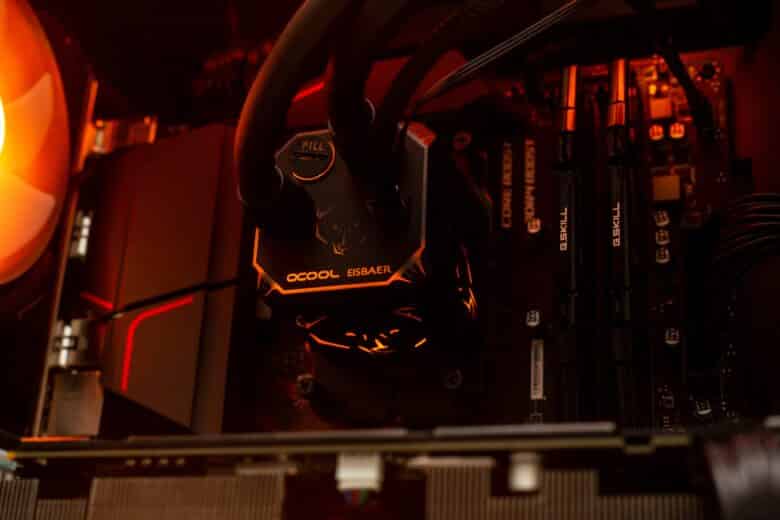
The fans have regular 4-pin PWM fan connectors and can be connected to a header via the 3-way split cable. The RGB cables can all be connected together – including the one from the pump unit – and then also connected either to the included RGB controller or to the motherboard. For both, you need the adapter that brings the proprietary connectors (with a pretty good grip and small dimensions after all) to an ARGB connector.
The RGB controller offers 10 different modes. These include different patterns (blinking, rotating, solid color) and also RGB modes (from changing colors to multiple colors at once. Another button lets you set the speed for moving modes – from quite slow in seven steps to really extremely fast. The last button selects the color for modes with single colors. In short: It offers everything you need. However, since you’ll be storing it inside the case, you’ll have to open the case to make changes.
Expandability
- Additional radiators can be added
- Graphics card coolers can be added to the system
- Test with an additional 280mm radiator
From Alphacool, there are pre-filled radiators with quick-release fasteners that you can include in the system. This allows you to increase the headroom of the heat capacity and increase the performance. So we also perform a test right away, where the Alphacool Eisbaer Aurora HPE Edition 360 CPU AIO already offers this feature. Alternatively, there is the option of including a graphics card AIO; but here you have to pay attention to the compatibility from the cooler to the graphics cards.
For the test, after the measurements of the Alphacool Eisbaer Aurora HPE Edition 360 CPU AIO in its original state, the Alphacool NexXxos 280 is installed in the pre-filled version.
Workmanship and features are virtually identical to the factory supplied radiator. However, you can see that no fans are included, which adds to the cost if you don’t already have fans you want to use for it. However, screws for different thicknesses of fans are included instead. And these screws can be distinguished at first glance by the different screw heads. The ones with a Phillips head are for regular fans with a thickness of 25 mm, like the be Quiet! Silent Wings Pro 4 140 mm used later in the test. In contrast, the other screws come with hex heads (and included tools) and are for thicker fans, such as the Noiseblocker NB-eLoop X shown in the following image on the right:
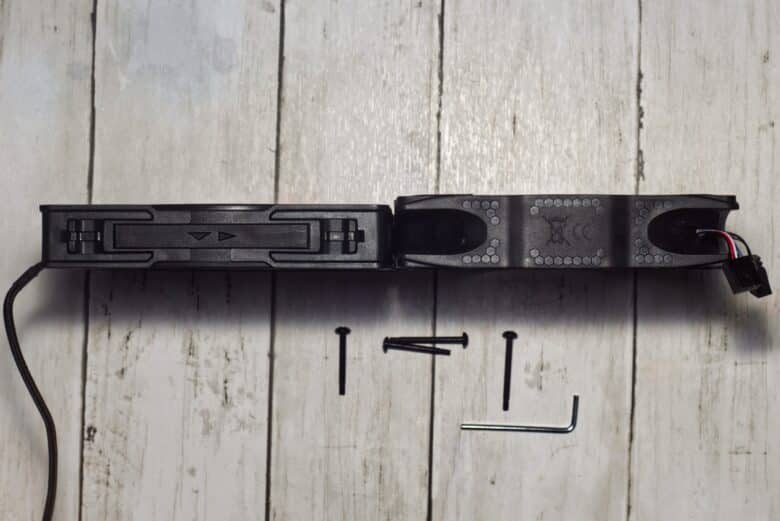
Auxiliary Radiator Installation
- Quick-release fasteners are threaded to open and close
- You need to be guided by the available hose lengths
- With an increased number of components, the hoses hang somewhat chaotically
Mounting the additional radiator from Alphacool’s pre-filled NexXxos range is quite simple. For this, the Alphacool Eisbaer Aurora HPE Edition 360 CPU AIO does not need to be removed. On the contrary, it’s easier with the system already assembled. First, I looked to see what orientation the radiator would go into the case, as you are limited by the tubing lengths and the position of the quick disconnects. Then I mounted the fans and tightened the radiator with the short screws (which were in the plastic bag with the regular fan screws). Now the quick release on the AIO is screwed on via a thread (keep a cloth handy – a few drops come out) and screwed to the NexXxos radiator with the ends of the quick release.
It’s that simple and you now have two radiators in the loop. One downside to the simple AIO expansion with the quick disconnects is that the hoses have a fixed length and they may now flap around a bit chaotically. It won’t be quite as neat as you’d get with a proper custom water cooler, or look like a regular AIO. With that out of the way, let the testing begin!
Test Procedure
- Test against regular AIOs with no expansion capability
- Test against sister model Eisbaer Pro Aurora 360
- Test with uniform premium fans
- Test with additional radiator
For the test, the Alphacool Eisbaer Aurora HPE Edition 360 CPU AIO and other 360mm water coolers with Alphacool Subzero thermal compound are installed in the test system in the front of the Fractal Design Pop XL Air. The cooled processor is an AMD Ryzen 5 5950X with a 4.3 Ghz all-core overclock at 1.25V peak voltage, resulting in a power consumption of around 160 W in Cinebench.

For the test procedure, the coolers are first brought up to the contant maximum temperature by running Cinebench for 10 minutes. Then the processor temperature is measured for one minute and the average temperature for the period is measured. Afterwards, the current room temperature is subtracted from the temperature to avoid falsified results even when the room temperature fluctuates. The temperature delta is given in Kelvin.
The pump runs at full power in all cases, the fans are set at 25, 50, 75 and 100% power for best comparability.
Now, to gauge how well the fans perform and how well the rest of the test system performs, the test is then repeated with uniform premium fans, the be Quiet! Silent Wings Pro 4.
The tested coolers are these:
Test results in performance and volume
Here’s how the results turned out:
| 25% PWM | 50% PWM | 75% PWM | 100% PWM | |
| Alphacool Eisbaer Aurora HPE Edition 360 CPU AIO | 61.8 K @ 930 RPM, 40 dB | 53.3 K @ 1650 RPM, 48 dB | 50.9 K @ 2150 RPM, 55 dB | 49.9 K @ 2550 RPM, 60 dB |
| Alphacool Eisbaer Aurora HPE Edition 360 CPU AIO with be Quiet! Silent Wings Pro 4 (UHS) | 55 K @ 950 RPM, 39 dB | 49.5 K @ 1600 RPM, 43 dB | 48.3 K @ 2200 RPM, 48 dB | 47.7 K @ 2750 RPM, 54 dB |
| Alphacool Eisbaer Aurora HPE Edition 360 CPU AIO with nexXxos Eiswolf 280 mm and be Quiet! Silent Wings Pro 4 (UHS) | 53.4 K @ 950 RPM (120 mm) & 800 RPM (140 mm), 39 dB | 48.6 K @ 1600 RPM (120 mm) & 1250 RPM (140 mm), 43 dB | 47.5 K @ 2200 RPM (120 mm) & 1790 RPM (140 mm), 51 dB | 47 K @ 2690 RPM (120 mm) & 2190 RPM (140 mm), 56 dB |
| AORUS Liquid Cooler 360 | 65.6 K @ 670 RPM, 39 dB | 51.3 K @ 1320 RPM, 46 dB | 48 K @ 1880 RPM, 51 dB | 46.6 K @ 2350 RPM, 57 dB |
| AORUS Liquid Cooler 360 with be Quiet! Silent Wings Pro 4 (UHS) | 55.4 K @ 980 RPM, 39 dB | 48.1 K @ 1670 RPM, 44 dB | 45.4 K @ 2200 RPM, 48 dB | 45 K @ 2700 RPM, 53 dB |
| Alphacool Eisbaer Pro Aurora 360 CPU AIO | 57.7 K @ 930 RPM, 40 dB | 48.8 K @ 1650 RPM, 48 dB | 46.4 K @ 2170 RPM, 55 dB | 45.6 K @ 2600 RPM, 60 dB |
| Alphacool Eisbaer Pro Aurora 360 CPU AIO with be Quiet! Silent Wings Pro 4 (UHS) | 51 K @ 950 RPM, 39 dB | 45.9 K @ 1600 RPM, 43 dB | 44.6 K @ 2200 RPM, 48 dB | 43.9 K @ 2750 RPM, 54 dB |
| DeepCool LS720 | 52.7 K @ 840 RPM, 40 dB | 45.6 K @1480 RPM, 44 dB | 44 K @ 1900 RPM, 48 dB | 43.3 K @ 2230 RPM, 52 dB |
| DeepCool LS720 with be Quiet! Silent Wings Pro 4 (UHS) | 50.6 K @ 950 RPM, 40 dB | 44.8 K @ 1600 RPM, 43 dB | 42.8 K @ 2200 RPM, 48 dB | 42.3 K @ 2750 RPM, 54 dB |
Notes on the measurement: green means good performance, yellow means acceptable performance, and red means borderline performance. The temperature delta measurement means that this value must be added to the current room temperature to get a fairly accurate value. If we have a room temperature of 22.3° C and add a delta of 44.8 K, we get a CPU temperature of 67.1° C. So, all green temperature values mean that the CPU stays below 70°C under long-term full load at a room temperature of 20°C. For the yellow values, the CPU temperature is between 70 and 80° C in the corresponding scenario and the red values are above that.
Similarly, the volume: green is pleasant and unobtrusive, yellow is clearly audible and can be annoying, red is exhaustingly loud. Note on this: An increase of 6 dB corresponds to a doubling of the volume.
Evaluation of the test results
- Loud fan
- Lowest performance in comparison
- Never the less, the performance is good
There’s not much to sugarcoat: of the four all-in-one water coolers tested, the Alphacool Eisbaer Aurora HPE Edition 360 CPU AIO performs the worst in relative terms. And is – together with the Pro version – the loudest in the process. On the other hand, it is still not a bad performance in absolute terms. Because on the one hand, it keeps this quite power-hungry processor below the throttling temperature at any fan speed, and on the other hand, according to the custom concept, you can still increase the performance by changing the fans and adding more components.

However, it is also a fact that the included Alphacool Aurora Rise fans are very loud when they are pulling air through an obstacle, like the front grill of a case. When they don’t have an obstacle in front of them, they are far quieter. So, if you don’t put them in the front behind a front grill of a case, but instead put the radiator in the top of the case, it’s quite likely that the volume results will be far less extreme. However, they are not recommended for use behind an appropriate grille, as in this review, so I would advise a change here.
Conclusion
In principle, the Alphacool Eisbaer Aurora HPE Edition 360 CPU AIO is a good cooler, although better performance can already be found cheaper. However, unlike the competition, Alphacool offers a better maintenance option and you can expand the system and reuse individual parts for a proper custom water cooling system. Somewhat disappointing were the loud fans. So overall, the Alphacool Eisbaer Aurora HPE Edition 360 CPU AIO is definitely a sensible and sufficiently powerful system with a lot of options that unfortunately can’t quite keep up with the similarly priced competition in its basic configuration.
Alphacool Eisbaer Aurora HPE Edition 360 CPU AIO
Workmanship
Design
Mounting
Features
Performance
Value for money
82/100
The Alphacool Eisbaer Aurora HPE Edition 360 CPU AIO is a solid system with a high sustainability factor, but the fans and overall performance could be better.


